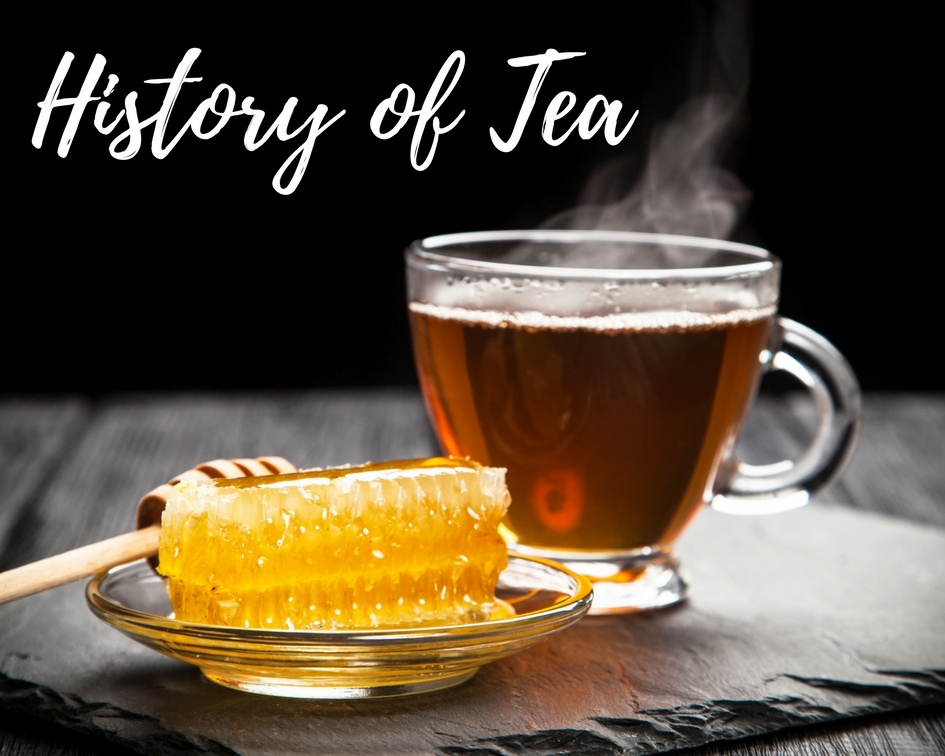A cup of tea is often associated with the British. Their love of tea time and a spot of tea during the day is widely known, but the invention of tea actually dates back to the Chinese. And, it’s an extremely popular drink with Americans.
According to the Tea Association of the USA, Americans had almost 84 billion cups of tea in 2016. In honor of National Tea Month, we wanted to take a look at the evolution of tea and find out who we really have to thank for this warming beverage and how its popularity has grown over the centuries.
2737 BC – 59 BC
- Chinese legend states that tea was created accidentally when leaves from the Camellia sinensis plant drifted into an Emperor’s hot pot for water. The first known instructions for making and purchasing tea were recorded during this time!
22 AD
- First known health benefits of tea were recorded by a Chinese physician, citing mental clarity.
400-600
- The demand for tea grows in China and by Turkish traders so steadily that farms begin growing it instead of cultivating it from wild trees.
589-618 (Sui Dynasty)
- Tea is introduced in Japan by Buddhist Monks during the Sui Dynasty.
618 CE – 906 (T’ang Dynasty)
- Caravans begin carrying tea on the “silk road’ trading with India, Turkey, and Russia, during the T’ang Dynasty.
1205-1368 (Yuan Dynasty)
- Tea experiences a popularity downturn and becomes known as an ordinary drink, no longer regarded as special and sacred in China.
1368 – 1644 (Ming Dynasty)
- Seeping tea, a new method of preparing tea using whole tea leaves is introduced. This reignites the passion for tea there once was in China.
1422-1502
- Chao No Yu, meaning “no water for tea” is a special Japanese tea celebration is developed.
1600’s (Tea Expands to Europe)
- Dutch people trade dried sage for tea and bring tea to Europe.
- Tea is sold in England for the first time at Garway’s Coffee House in London.
- Taiwanese begin to drink wild tea.
- Tea drinking becomes so posh that it causes alcoholic beverages to fall from favor when Charles II takes Portuguese Catherine Braganza as his wife. The couple makes tea drinking the fashionable and “in choice.”
- Taiwanese begin to cultivate tea. Dutch traders take it to Persia, the first known export of Taiwanese tea.
- Russia’s demand is so high for tea that traders with 3,000 camels traveled 11,000 miles to China for the tea. The trip took 16 months to complete round trip!
1700’s
- The yearly export of tea to England grows over 80,000 pounds!
- American colonist developed a taste for tea. The Boston Tea Party results in dumping of tons of tea in protest of English taxes on the colonies.
- Opium is traded to China in exchange for tea leading to an opium addiction in China.
1800’s
- Chinese exports stop to get the opium problem under control. It eventually reopens as does a new way to export goods through the Suez Canal. This route makes exports and imports to China easier and faster.
- Experiments of cultivating tea in India begin.
- Coffee crops are wiped out shifting the preference to tea.
- Tea blends in England become popular.
1900’s
- Ice tea is created.
- The railroad offers a more convenient way to transport goods, including tea to Russia.
- Tea bags are invented in New York.
- Indonesia and Africa begin cultivating tea.
- The first instant tea is produced.
- Taiwanese government encourages tea consumption, revitalizing the culture.
2000’s
- More than 2.5 million tons of tea is produced in over 40 countries around the world!
